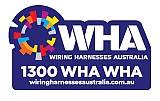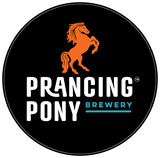UNMANNED AERIAL VEHICLE (UAV) POLICY
Commercial Use
The CASA defines the commercial use of a drone as anything you’re doing relating to business operations. For example, if you’re a production company strapping a camera to a drone for the purposes of gathering footage, or if you’re flying something into the air to test it via a drone, that’s commercial use.
CASA requires that pilots undergo a certification process in order to get an Operator’s Certificate. That demonstrates that you can not only fly a drone safely, but also that you’re aware of rules and regulations relating to drone flights in Australia.
Commercial operators need explicit approval from CASA including a flight plan and copies of your certifications must be provided to DLRA Registration.
Civil/Hobby Use
Private operators don’t need approval from CASA before taking flight with their drones, but there are some rules that need to be respected.
The rules are simple:
• Stay at least 30 metres away from people with your drone.
• Keep your drone under 400 feet (121.92m).
• You may not operate your drone above a large gathering of people (e.g.: at sporting events, over crowds at the beach or groups of protestors).
• You must keep your drone within sight while you’re operating it.
• You may not operate your drone within 5km of an airport and a place where planes take off or land from.
FAQ's
What is a UAV?
An UAV is an unmanned aerial vehicle, piloted by remote control or on-board computers. At DLRA events they are generally used to obtain vision from the air. UAVs are commonly referred to as drones.
Can a UAV be used at a DLRA permitted event?
A UAV can be used at a DLRA permitted event providing the UAV is operated within the guidelines of the DLRA policy. In short that is:
- The UAV operator or controller is certified by CASA; and
- Carries their own public liability insurance.
What does the DLRA need be aware of in regards to operation of a UAV?
In short, the DLRAmust ensure:
- There are no more than five UAVs in operation at any one time.
- A UAV must not fly:
- within 30 metres of any automobile, person or competition area during any competitive activity;
- in the vicinity of any medical vehicle or person attending a scene of an incident (unless authorised by an Official);
- in a manner that distracts or impedes the view of a Driver or Co-Driver; and
- without a designated safety observer in place (whose role is to stop any person or automobile entering the landing site);
- A UAV lands in a designated area only (selected by the organiser)
- A UAV is not used by an operator or controller:
- on the competition surface during any on-track activity;
- on any part of an event's first line of protection; or
- from a position that interferes with an Official.
Does the media organisation need to agree to have a UAV operator or controller on site?
Yes, the media organisation must be aware who is on site at all times.
What paperwork is required?
The UAV operator is like any other contractor at a DLRA event – they need to provide adequate information to enable the event organiser to meet both the DLRA Safety 1st documentation process and requirements stated in the DLRA Safety 1st Checklist for contractors.
Does the DLRA need to approve a UAV operator?
No, the media organisation may select their own UAV operator, as long as they comply with the DLRA UAV Policy.
Where do I find a CASA certified UAV operator?
Currently there are approximately 260 entities registered under the commercial CASA requirements.
Visit https://www.casa.gov.au/uas-operator-certificate-holders
What is the difference between a UAV operator and a UAV controller?
A controller is someone who flies the UAV and an operator is usually a company who has the licence to operate.
What if it is considered the UAV is operating unsafely?
The DLRA President, Vice President and Event Director all have the right to cease UAV activity at any time if safety concerns are raised or the control measures are not carried out.
Learn More
- About the DLRA
- Introduction
- Newsletter
- DLRA Rulebook
- Operational Plan
- Classes
- Members List
- Honour Roll
- Merchandise
- History of DLRA
- DLRA in Print
- Frequently Asked Questions
Join the DLRA
Support the DLRA
Support the DLRA
- Promote your business by advertizing in the DLRA Newsletter
- Sponsors Information










